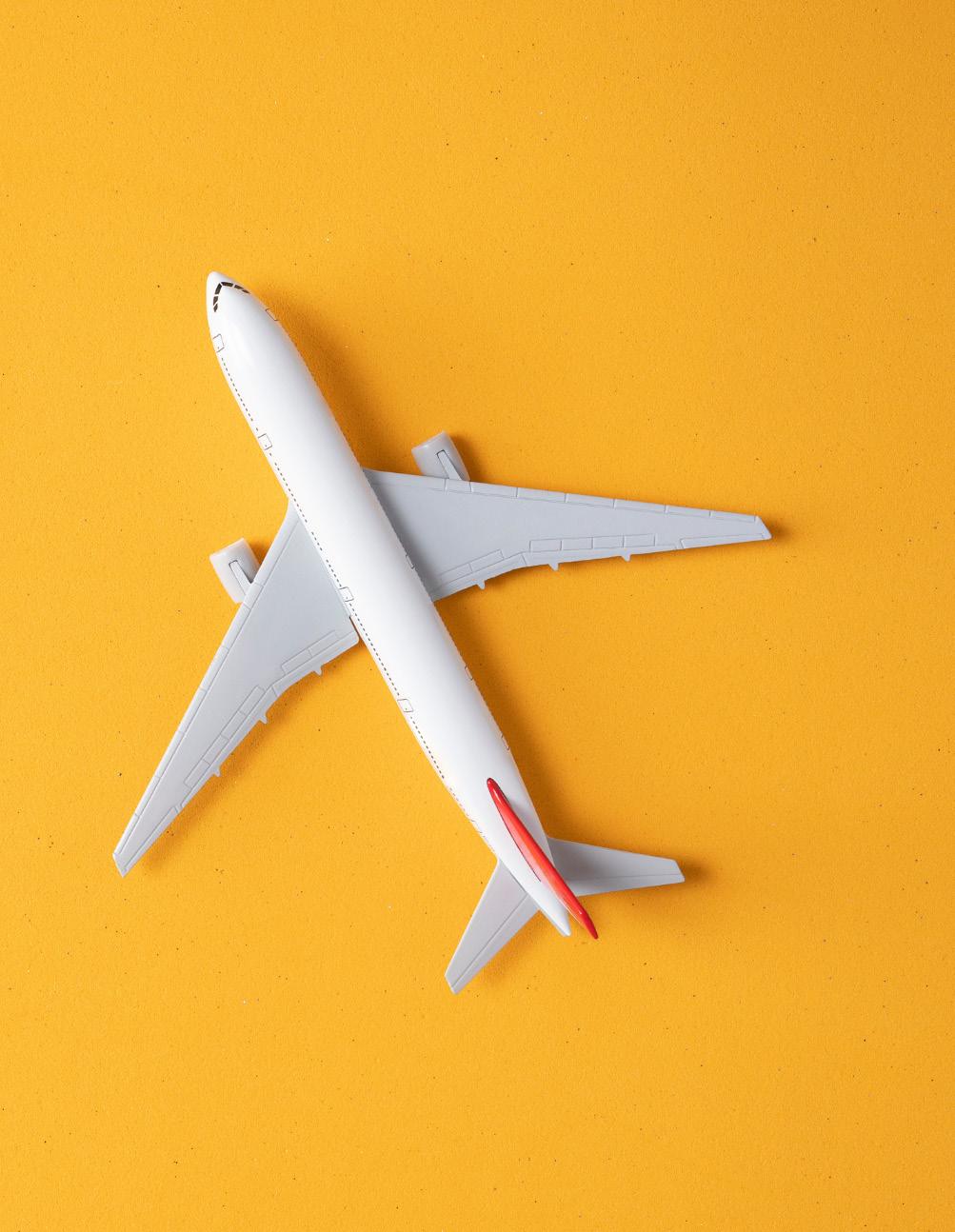
4 minute read
PUSH Travel, 5 Dirtiest Parts on a Plane, According to Flight Attendants
PUSH Travel
5 Dirtiest Parts on a Plane, According to Flight Attendants
Put on hand sanitizer before reading this. According to the Federal Aviation Administration, nearly three million passengers fly across the United States every day, and millions more travel across the globe. Those planes must get turned around quickly, and while dedicated cleaning crews do their best to scrub every seat before the following passengers file in, things can sometimes get missed or stay a bit dirty from flight to flight. And, according to flight attendants, there are a few spots you may want to avoid, or at least use hand sanitizer after touching.
Here are five of the dirtiest places on a plane.
Tray Tables
Passengers generally know airplanes are riddled with bacteria, but the tray tables go beyond general germs. Giving your tray table a good wipe once you get on board, especially before eating, is a good idea. Tray tables have nearly eight times more bacteria per square inch than the second-dirtiest place: the overhead air vent button. Passengers have been known to use tray tables for changing diapers to resting their heads, making them a hot spot for germs.
Overhead Bin
It is key to either wipe down or use a cloth to open the overhead compartments, as they are touched by many people and rarely cleaned. While it’s tough to avoid them, once you are done loading your carry-on, use some hand sanitizer again. Remember that other passengers’ luggage, which has been on the ground or in dirty cabs, also makes contact with the bin surfaces.

Bathroom Handles
The toilets are regularly cleaned, but the locks and door handles are not. For this reason, it is a good idea for passengers to use hand sanitizer after stowing away their luggage, touching anything in the seat pocket in front of them, and going to the bathroom. Since airplane bathrooms are small, bacteria from flushes can easily spread, so it’s wise to avoid touching surfaces as much as possible.
Seat Covers
The seat covers are not always replaced or cleaned and only get replaced or cleaned if they have been reported. Even then, it could be a toss-up. Not every soiled seat is reported, as it could delay a flight. Plenty of disposable and reusable seat covers are on the market for those who can’t bear the thought of a gross seat. A simple solution is to bring disinfectant spray or wipes and quickly clean your seat before settling in.
Instruction Cards
The safety instruction card in the seat pocket is the plane’s dirtiest spot. Though the tray tables usually get wiped down, the instruction cards do not. So, once you’re finished reading the safety instructions, put on a little hand sanitizer — or better yet, wipe down the instruction card with a wet wipe to save you and future passengers from germs. Seatback pockets, where these cards are stored, are rarely cleaned and often hold trash from previous passengers.
There is one more thing you might not want to touch on your next flight… Ice. Drinking water on planes is potentially unsafe for humans when coming from the plane’s tanks. Studies have shown airplane water tanks can contain bacteria like E. coli, making any beverages from this water potentially hazardous. The best two takeaways are not to drink coffee and tea and not wash your hands using the bathroom sink; instead, bring and use wipes. If you need a hot beverage, it’s safer to stick with bottled options whenever possible.










